|
1946 US Army Ike Dress Jacket -
When the United States entered World War Two much of the military was unprepared for combat.
The unforms and equipment employed was very antiquated, most of it dated back to
World War one.
WWII witnessed a large introduction of new designs of combat clothing. After the war was won,
many of the same uniforms continued to be produced. The Ike jacket is an example.
Made of
wool material. The same design
used during WWII survived until the late 1950's and was used by both, the Army and Air Force.
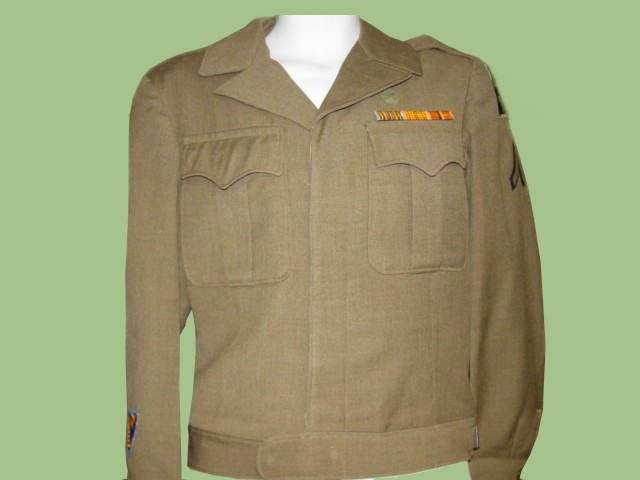
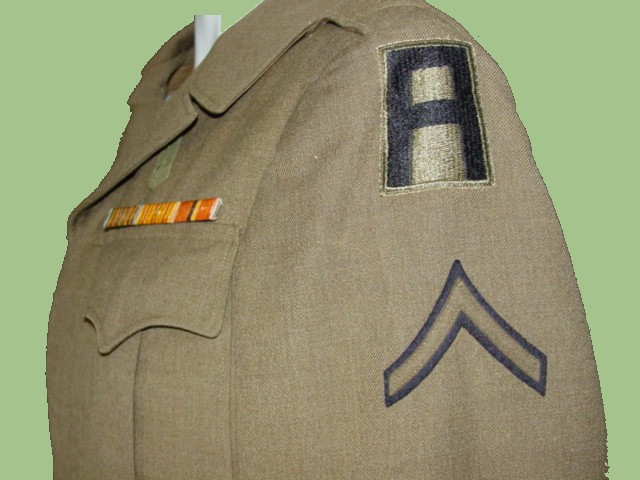
The design of the jacket consisted of a short length cut with two front top pockets. Each pocket was
covered by a flap secured by a snap. The waist was adjustable via the use of a flap with snaps on the
end. The upper section of the lapel has a small strap that could button up to the opposite end,
creating a tight fit for the neck area. The shoulders have eppauleps with one side being crossed
stictched to the end while the other is secured by a button. Long sleeve construction with button up
cuffs.
Unlike earlier American uniforms, the front buttons
were sewn to the jacket instead of being held by rings. Of plastic construction. Green color. The buttons
were covered by a flap and were not visible when the jacket was worn.
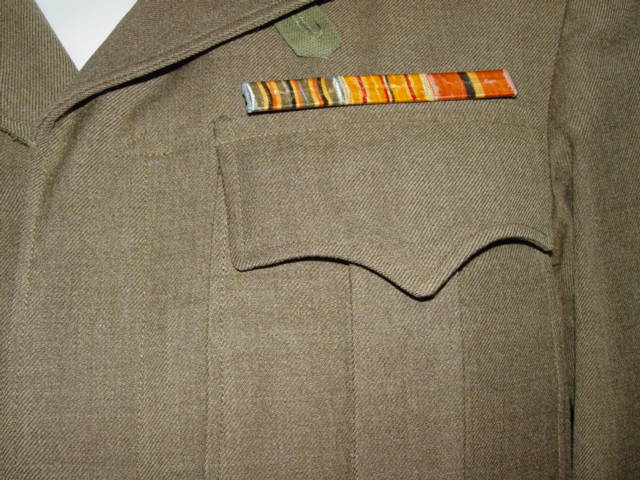
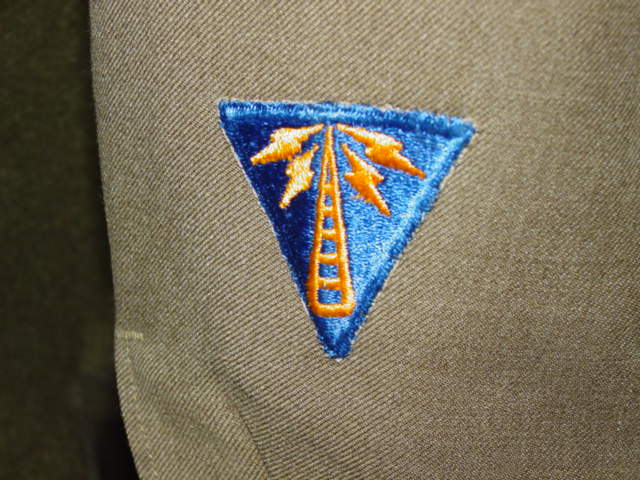
The American tunics were outfitted with a variety of
patches
to denote rank and affiliation to a particular unit or group.
The patches were sewn to the left and right arms and sometimes in
the breast area. The jacket discussed here has several patches which
include the rank of private, The First Army patch in subdued colors and
the communications sleeve rating.
In addition, metal collar
insignia
were employed. They normally show rank and the type of job the soldier performs
(i.e. artillery, checmical, administration, aviation, etc.). The medal ribbons
provided a way to indicate the type of medal earned without having to wear the
medal itself. The jacket has three ribbons covered with see-through plastic.
|
This page is a recognition and identification guide for WWII US military uniforms.
Multiple detailed photos of a specific sample are provided. Descriptions point out
clearly defined points that should be noted.
One of the most commonly asked questions is "How much is my WWII US uniform worth?".
A price guide is included here to address this question. The value of the uniforms is
reviewed over a period of several years. A trend can be observed. The present worth
of the American military uniforms in the collector's market is illustrated.
This service is provided free of charge to the visitor/enthusiast courtesy of
MilitaryItems.com,
a company dedicated to the preservation of military history and to providing quality
military antiques and collectibles to museums, institutions and the general public.
|
|
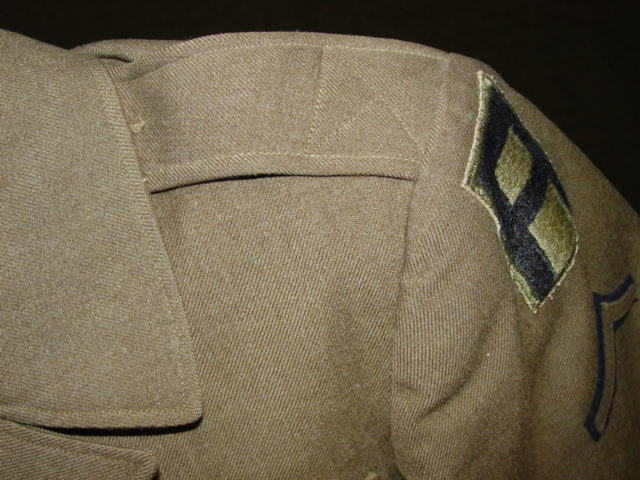
The jacket has three tags. One is
small and located in the neck are. It displays the size of the jacket which is 36. A
second tag located in the area reads: Jacket, Field, Wool OD and has instructions about
how to wear the jacket. The third tag is located in the inside of one of the pockets.
It has information about the date of manufacture, the name of the manufacturer and the
size of the jacket. A blue ink stamp has been applied by the clothing inspector.
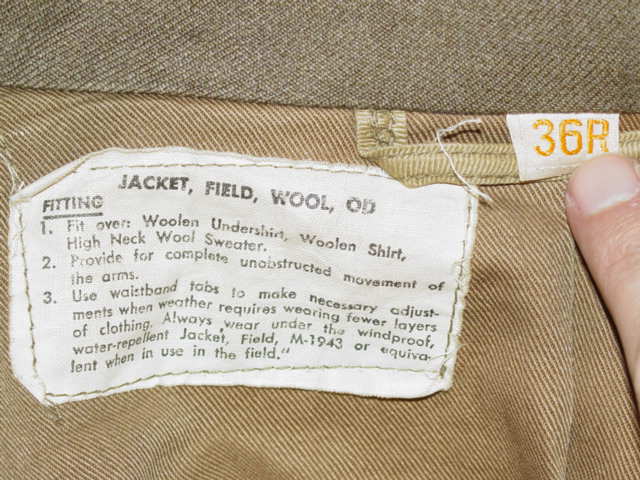
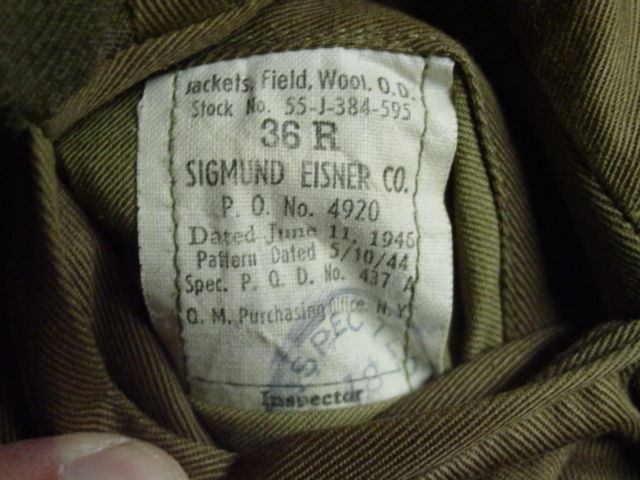
This item is currently being reproduced.
It is becoming more difficult to be able to tell the fake ones from the real ones because the quality
of the reproductions is improving. The collector must become familiarized with the construction style
and materials employed in the manufacturing items like this one. Attention to the details is critical
in order to be able to determine the authenticity of the WWII US uniforms.
If you have an interest is seeing other WWII American Military uniforms, you can
do so by going to our
The History
of the American Military Uniform identification guide.
|







